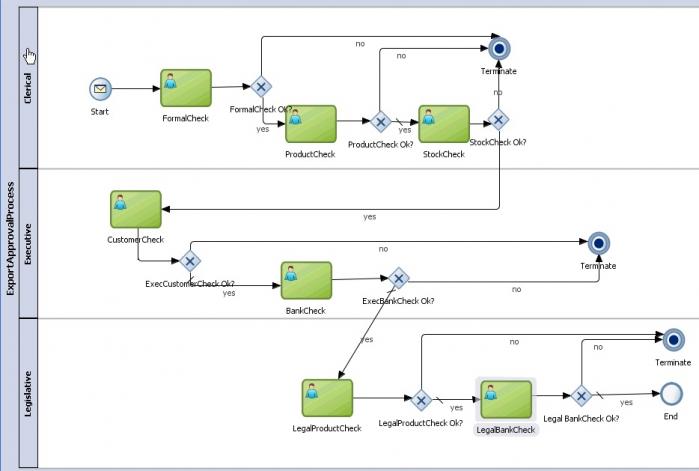Business Process Management (BPM) is the discipline of improving business processes.
By analyzing it, modelling how it works in different scenarios, executing improvements, monitoring the improved process and continually optimising it, certain efficiencies and cost reductions can be obtained by the business.

Optimising is done by analysing and breaking down the key critical workflows of your business and automating repeatable human-driven tasks into a digital format.
A workflow consists of an orchestrated and repeatable pattern of business activity enabled by the systematic organisation of resources into processes that transform materials, provide services, or process information. It can be depicted as a sequence of operations, declared as work of a person or group, an organisation of staff, or one or more simple or complex mechanisms.
The workflow is the process wrapped around a document, service or a product that is being transferred from one step to another.
As such, from a more abstract or higher-level perspective, it may be considered a view or representation of real-world work.
How Our Flowable Platform Digitally Solves These Problems:
Our enterprise grade platform solves these complex issues dynamically by adapting to both internal and customer expectations in a low code and rich drag and drop toolkit.
It bridges the gap between business and IT teams, fostering more productive cross-functional collaboration.
Its open source and open standards based technology ensures freedom from vendor lock in, the flexibility to create the models and applications that are right for your business, and its open architecture makes it easy to plug into any IT landscape.
Solution 1: Intelligent Business Automation:
Intelligent business automation can make organisations more agile when they need to rapidly respond to market and customer demands. With scalable automation architectures you can optimise both internal and customer facing processes for operational excellence, increased efficiency and reduced costs.
Solution 2: Case Management:
Automation is an important way of reducing costs and increasing the efficiency of business processes, but it is only the first step in properly managing cases and serving customer needs quickly. There is a whole spectrum of automation scenarios ranging from simple and repetitive system interactions to complex, unpredictable cases that involve intertwine both systems and human decisions in the workflow.
Solution 3: Service Orchestration:
Teams need to work smarter, not harder. By orchestrating various aspects of the business, this tool can provide the digital glue connecting different datasets and applications to ensure that business data flows through the organisation, automating the deployment of new and updated business solutions, and automatically responding to IoT devices and microservice events.
